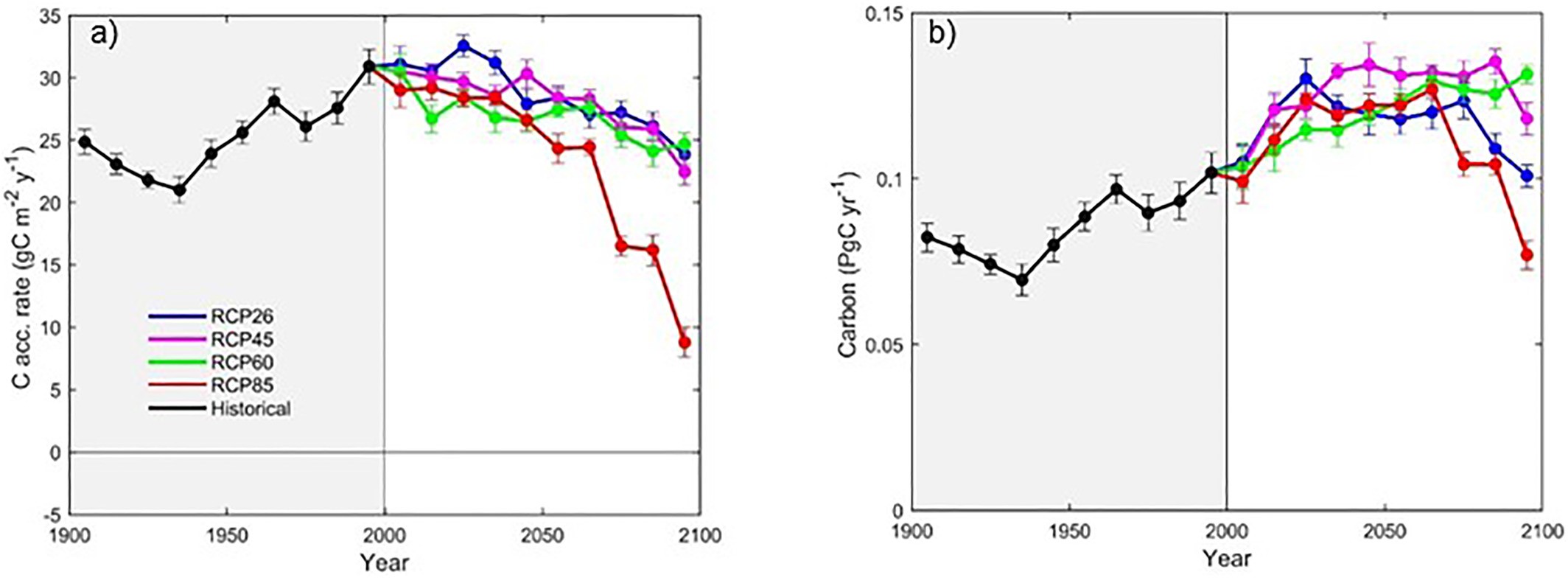Peatlands are considered a carbon sink by removing carbon dioxide (CO2) from the atmosphere through photosynthesis. However, climate change is threatening this large carbon stock since the ongoing warming may reduce peatlands potential to bind CO2.
Nitin Chaudhary et al. simulated the carbon dynamics in peatlands in mid- and high-latitude regions of the Northern Hemisphere under distinct future climate conditions. The authors used the state-of-the-art peatland-vegetation model (LPJ-GUESS) to examine how different warming scenarios change the carbon sink capacity.
They found that peatlands capacity to bind carbon will largely remain under less pronounced warming scenarios and will thereby still act as a carbon sink. Thereby, they have the potential to buffer the effects of climate change. Yet, peatlands are projected to shift from a carbon sink to carbon neutral in the strong warming scenario RCP8.5.
The past trend of increased CO2 accumulation in the 19th and 20th century will be reversed by strong warming. The main cause of the larger carbon release are the higher temperature driven soil respiration rates. An increase in CO2 levels in the atmosphere will further accelerate climate warming and will give rise to important climate-relevant feedbacks.



